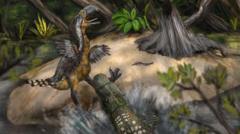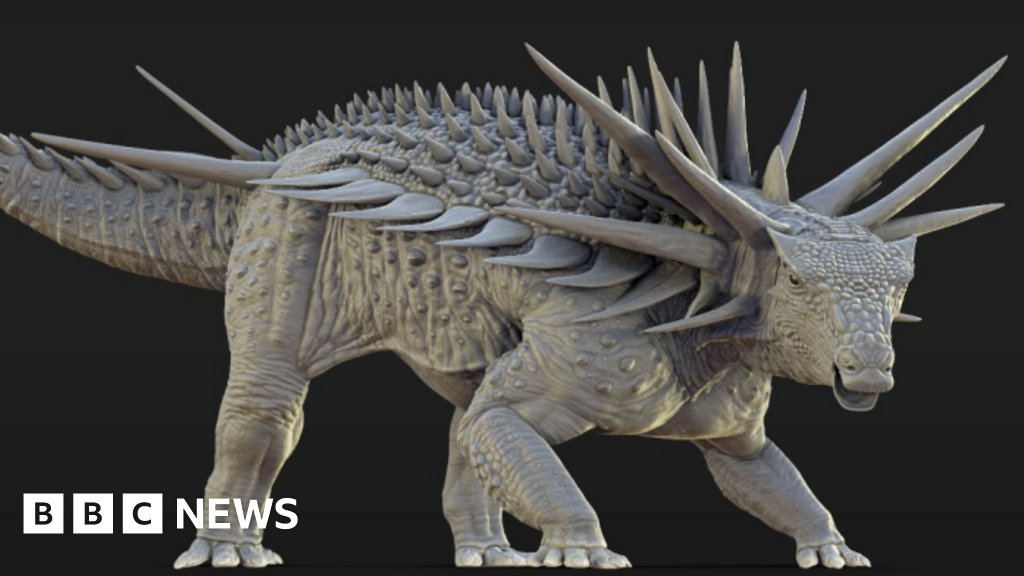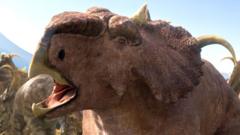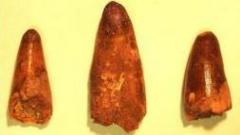The mystery of the ancient world has deepened! New findings reveal that a massive, fearsome bird known as a “terror bird” didn’t simply rule the roost 13 million years ago—it may have also fallen victim to an even bigger predator. Experts have examined teeth marks on the leg bone of one of these incredible avian reptiles, suggesting it was attacked by a giant caiman, a reptilian creature similar to today’s crocodiles.
Researchers from Colombia conducted an exciting study using 3D scans to analyze the fossilized bone, comparing the marks to preserved skulls and teeth from ancient crocodilian species. Their investigation, published in *Biology Letters*, indicates that the battle between the terror bird—a towering figure at about 2.5 meters tall—and its predator was a fight for survival. However, it remains uncertain if the bird was killed during the struggle or scavenged after its death.
The striking marks on the bone were first discovered 15 years ago in the Tatacoa Desert, a region rich in fossils from the Middle Miocene epoch, which was once a humid swamp. The leg bone was identified as belonging to a terror bird through collaboration with local fossil collector César Augusto Perdomo. This rare evidence not only highlights predator-prey dynamics of the past but also suggests that terror birds may have faced significant threats from other apex predators more frequently than once thought.
Dr. Andres Link, leading the research team, expressed how each fossil piece contributes to our understanding of life long ago. The research sheds light on how fierce ecosystems used to be and prompts further curiosity about interactions among these extinct giants, providing a glimpse into Earth’s rich biological history.
Researchers from Colombia conducted an exciting study using 3D scans to analyze the fossilized bone, comparing the marks to preserved skulls and teeth from ancient crocodilian species. Their investigation, published in *Biology Letters*, indicates that the battle between the terror bird—a towering figure at about 2.5 meters tall—and its predator was a fight for survival. However, it remains uncertain if the bird was killed during the struggle or scavenged after its death.
The striking marks on the bone were first discovered 15 years ago in the Tatacoa Desert, a region rich in fossils from the Middle Miocene epoch, which was once a humid swamp. The leg bone was identified as belonging to a terror bird through collaboration with local fossil collector César Augusto Perdomo. This rare evidence not only highlights predator-prey dynamics of the past but also suggests that terror birds may have faced significant threats from other apex predators more frequently than once thought.
Dr. Andres Link, leading the research team, expressed how each fossil piece contributes to our understanding of life long ago. The research sheds light on how fierce ecosystems used to be and prompts further curiosity about interactions among these extinct giants, providing a glimpse into Earth’s rich biological history.













